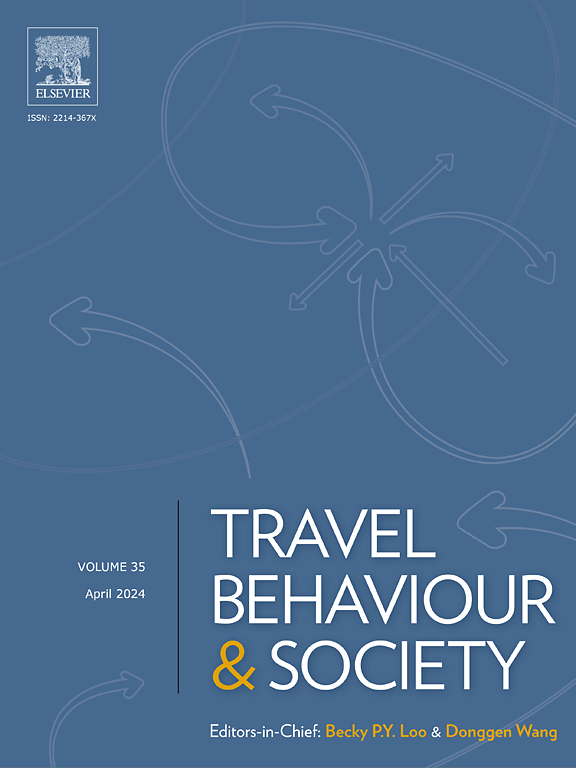Getting around on foot: Older adults’ walking experiences and perspectives on neighbourhood walkability across Canada
IF 5.1
2区 工程技术
Q1 TRANSPORTATION
引用次数: 0
Abstract
Older adults’ living environments are instrumental in making walking part of their daily lives, as we strive to promote healthy aging. Objective measures, such as WalkScore®, and subjective measures of walkability provide means to grasp the factors that enable or hinder frequent and enjoyable walking. However, there is limited consensus on what factors contribute to mismatch between perceptions of walkability and objective built environment measures, particularly among older adults. We interviewed fifty-eight older adults (65 +) from six Canadian cities to uncover the relationship between their perceived neighbourhood walkability and objective built environment measures. We segmented our interviewee sample into four categories based on their residential WalkScore® and perceptions of neighbourhood walkability. Our thematic analysis provides insight into strategies older adults use to respond to barriers to walking in their environment and walking facilitators they experience in their neighbourhoods. The findings can be of interest to practitioners and decision-makers as they seek to improve walking environments for aging populations, ultimately contributing to older adults’ long-term health and well-being.
步行:加拿大老年人的步行经历和对社区步行的看法
老年人的生活环境有助于使步行成为他们日常生活的一部分,因为我们努力促进健康老龄化。客观指标,如WalkScore®,以及可步行性的主观指标,提供了掌握促进或阻碍频繁和愉快步行的因素的方法。然而,对于哪些因素导致了步行性和客观建筑环境测量之间的不匹配,特别是在老年人中,共识有限。我们采访了来自加拿大六个城市的58位老年人(65岁以上),以揭示他们感知的社区步行性与客观建筑环境措施之间的关系。我们根据受访者的住宅WalkScore®和对社区可步行性的看法将受访者样本分为四类。我们的专题分析提供了老年人用来应对他们在环境中行走障碍的策略,以及他们在社区中遇到的行走便利设施。这些发现可能会引起从业者和决策者的兴趣,因为他们正在寻求改善老年人的步行环境,最终有助于老年人的长期健康和福祉。
本文章由计算机程序翻译,如有差异,请以英文原文为准。
求助全文
约1分钟内获得全文
求助全文
来源期刊

Travel Behaviour and Society
TRANSPORTATION-
CiteScore
9.80
自引率
7.70%
发文量
109
期刊介绍:
Travel Behaviour and Society is an interdisciplinary journal publishing high-quality original papers which report leading edge research in theories, methodologies and applications concerning transportation issues and challenges which involve the social and spatial dimensions. In particular, it provides a discussion forum for major research in travel behaviour, transportation infrastructure, transportation and environmental issues, mobility and social sustainability, transportation geographic information systems (TGIS), transportation and quality of life, transportation data collection and analysis, etc.
 求助内容:
求助内容: 应助结果提醒方式:
应助结果提醒方式:


